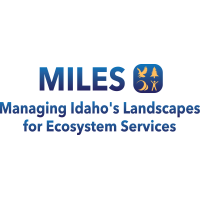Pocatello, Idaho historical orthomosaic for 1959 was created by collecting, scanning, merging and georectifying historic photography of Pocatello. The total spatial error is less than 1 meter. These historical orthomosaic images were derived using SfM (Structure-from-motion photogrammetry). SfM uses a series of overlapping images aligned to form a 3D representation. Classification resulted in raster and vector data with discrete classes grouped into objects located in the urban corridor of Pocatello. High-resolution aerial photography of the Pocatello area was provided by Valley Air Photos and the Idaho State Historical Society for 1959. All images were transferred from a traditional 9x9 photograph and scanned at a 1210 dpi resolution. (Date: 11/02/1959, Scale: 1: 12,000, Total GSD [GSD = photo scale x scanning resolution]: 44, Scanned resolution: 11432x11241 1210 dpi). The general workflow for processing was as follows: Image collection, image pre-processing combined with gps positioning and differential correction. Photo alignment, point cloud generation, point cloud meshing, orthomosaic and DSM (Digital Surface Models) output. Photos were aligned using Agisoft Photoscan. Focal lengths for data sets were 152mm. GPS points were collected for ground truthing. Photo alignment, dense cloud, and mesh generation using ground control points, resulted in orthomosaics and DSMs (Digital Surface Models) for time periods. Orthomosaics were produced at a fine scale spatial resolution: .25m resolution in all cases except the final year at .5m due to differences in scale of the original imagery. Each orthomosaic and DEM was outputted at .5 m and 1 m resolution respectively, in order to maintain continuity between data sets. See Brock Lipple Thesis, 2015, for more in-depth discussion of the scanning and merging process. [http://geology.isu.edu/thesis/Lipple.Brock.2015.pdf] See data here: http://miles.isu.edu/Basemap/HistoricPocatello.html
Data and Resources
| Field | Value |
|---|---|
| Modified | 2019-03-19 |
| Release Date | 2015-03-18 |
| Publisher | |
| Identifier | ac24e9bd-9aa7-4a03-a823-6f63356dd351 |
| License | cc-nc |
| Public Access Level | Public |
| DOI | 10.7923/G4X63JT0 |

